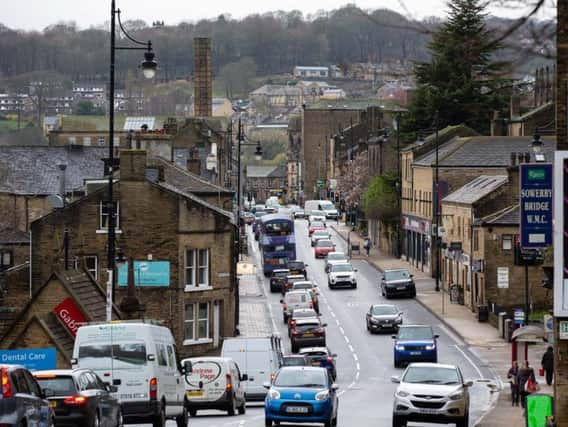Pilot project for Calderdale town to improve air quality for the community


Calderdale Council hopes proposals for creating a healthy low emissions neighbourhood in Sowerby Bridge will be successful and if so they will be replicated in other trouble spots for air quality across the borough.
When it meets on Monday, March 18, at Halifax Town Hall (6pm), the council’s Cabinet will be asked to recommend to full council that it approves the Air Quality Action Plan 2017-2030 for adoption in compliance with statutory requirements as set out in the Government’s Local Air Quality Management Framework.
Advertisement
Hide AdAdvertisement
Hide AdPoor air quality is an issue nationally and locally, impacting seriously on health, and objectives not met in some parts of Calderdale mean Air Quality Management Areas have had to be set up in seven parts of the borough – on the A629 at Halifax; the A58 at Sowerby Bridge; the A646 at both Hebden Bridge and Luddenden Foot; the A58 at Stump Cross near Halifax; Brighouse centre, and the A58 at Hipperholme with, most likely, the A58 at New Bank in Halifax being added to that list.
Last year the council’s Strategy and Performance Scrutiny Board heard that although air quality is good for most of Calderdale its road network is operating close to capacity with pollution from road vehicles responsible for the objectives, set nationally, not being met in those areas.
Cabinet is expected to also recommend full council to set up a governance structure which will form part of the council’s emerging Climate Emergency Working Group and will have close links to its Transport Working Group, looking to harmonise action across the authority.
The action plan’s key priorities are: promoting high quality alternatives to private vehicle use, recognising the contribution of diesel vehicles to air pollution; improving the transport network infrastructure for all road users; developing awareness of impacts and implementing remedies; integrating the priorities of other strategies and frameworks, such as public health and planning; and encouraging public engagement and involvement in the debate.